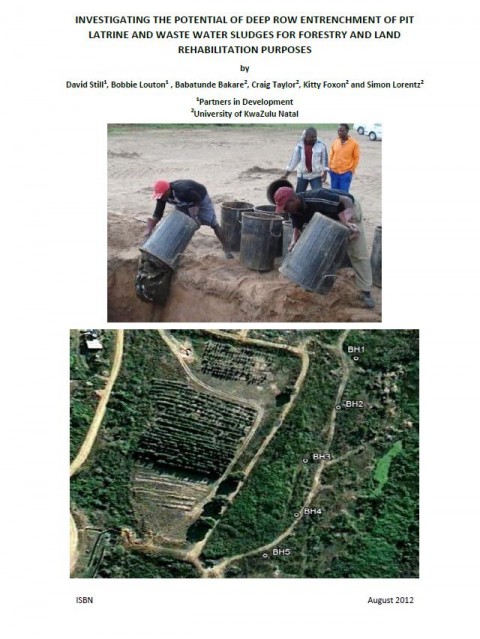Investigating the potential of deep row entrenchment of pit latrine and waste water sludges for forestry and land rehabilitation purposes WRC Project No. K5/1829 Still, D., Louton, B., Bakare, B., Taylor, C., Foxon, K., Lorentz, S. (2012)
Bibliographic information
Still, D., Louton, B., Bakare, B., Taylor, C., Foxon, K., Lorentz, S. (2012). Investigating the potential of deep row entrenchment of pit latrine and waste water sludges for forestry and land rehabilitation purposes WRC Project No. K5/1829 Water Reserach Commission (WRC), South Africa
Filter / Tags
Food security and productive sanitation (WG5)Groundwater protection (WG11)Faecal sludge treatment processesFaeces or faecal sludgeEnglish
Downloads
Investigating the potential of deep row entrenchment for sludge disposal - WRC 1829
Type: application/pdf
Size: 8.81 MB

